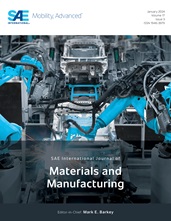The experimental investigation analyzed the performance of three machining
conditions: dry machining, cryogenic machining, and cryogenic machining with
minimum quantity lubrication (MQL) on tool wear, cutting forces, material
removal rate, and microhardness. The outcome of this study presents valuable
knowledge regarding optimizing conditions of turning operations for Ti6Al4V and
understanding the machinability under cryogenic-based cooling strategies. Based
on the experimentation, cryogenic machining with MQL is the most beneficial
approach, as it reduces cutting force and flank wear with a required material
removal rate. This strategy significantly enhances the machining efficiency and
quality of Ti6Al4V under variable feed rates (0.05 mm/rev, 0.1 mm/rev, 0.15
mm/rev, 0.2 mm/rev, 0.25 mm/rev) where cutting velocity (120 m/min) and depth of
cut (1 mm) are constant. The effects of the main cutting force, feed force,
thrust force, material removal mechanism, flank wear, and microhardness on
machining performance have been analyzed in this research work. It has been
observed that higher cutting forces result in greater energy transferred to the
workpiece material, leading to more effective material removal, and chip
thickness is reduced in cryogenic plus MQL conditions compared to dry and
cryogenic machining due to the excellent cushioning effect and reduced
adhesion.
